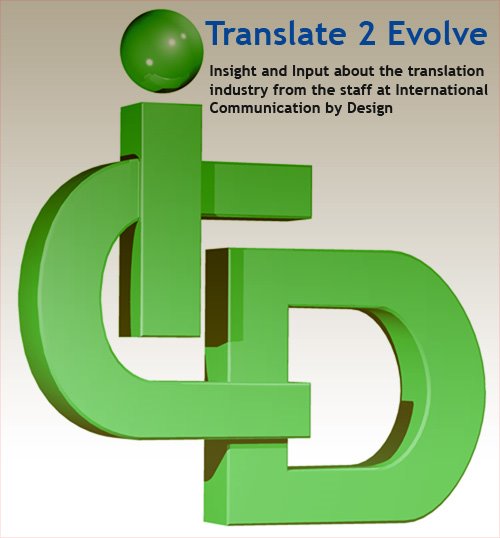ICD has attended and exhibited at numerous trade shows, and I'm always interested in what the sales team has to say when they return from shows. I know that it can be quite grueling and frustrating when you get rejected, but there are some really interesting conversations that happen on the floor. It's interesting how little people know about the translation and localization industry. I for one never realized how big it was until I started working at ICD. Translations were always on the back burner for most companies. It's on the: "We'll deal with it when we have to" list. No preemptive measures were necessary when exploring a global market because there was no reason to assume that people needed to read and understand the content. Companies didn't care about that, and they figured their distributors, or in-country sales personnel would deal with it.
Well, things have changed, and in our declining economy, translations are not on the back burner. Companies are branching out and trying to increase sales in different markets. They are doing it cautiously though, so prices are an issue, and translation is not cheap. Naturally, they start thinking about translating some marketing material, but they are afraid of spending what little they have on German brochures or a website when they don't know if they can make any in-roads in that market. Is translation and localization a waste of money? That's a question VP's of sales have to ask themselves every time they are approached by a rep from a translation company. It's a risk, but you've got to start somewhere.
Showing posts with label client. Show all posts
Showing posts with label client. Show all posts
Thursday, February 5, 2009
Wednesday, September 3, 2008
Fonts Fun
Desktop Publishers will sympathize with me on this topic. Fonts are a big problem when translated materials are desktop published. It is important to find out what platform the original document was created on: MAC or Windows, and then if there are compatible fonts for that language. Most Western European languages have fonts that are built into most of the software programs, and are compatible with both platforms. True Type Fonts (TTF) are a universal font type that you can install on both MAC and Windows. There are certain groups of fonts that are specific for Adobe's software, checkout the list at: Adobe Fonts
Asian languages have various fonts that are specific to each language based on the character type. For example: PMing Liu (包含鋰離子電池) for Traditional Chinese, and Sim Sun (包含锂离子电池) for Simplified Chinese. They may look similar to the common eye, but an expert desktop publisher will know that there is a difference, and you don't want your readers reading the wrong thing. Therefore, you can have your content translated correctly, but if you use the wrong fonts then it's a complete waste of time and money. On a side note, as I was writing this post, a client sent me an email asking what fonts I used for Arabic, Chinese, Polish, and Russian. What a coincidence since I was blogging about the importance of knowing and having the correct fonts for translated content.
Asian languages have various fonts that are specific to each language based on the character type. For example: PMing Liu (包含鋰離子電池) for Traditional Chinese, and Sim Sun (包含锂离子电池) for Simplified Chinese. They may look similar to the common eye, but an expert desktop publisher will know that there is a difference, and you don't want your readers reading the wrong thing. Therefore, you can have your content translated correctly, but if you use the wrong fonts then it's a complete waste of time and money. On a side note, as I was writing this post, a client sent me an email asking what fonts I used for Arabic, Chinese, Polish, and Russian. What a coincidence since I was blogging about the importance of knowing and having the correct fonts for translated content.
Subscribe to:
Posts (Atom)
